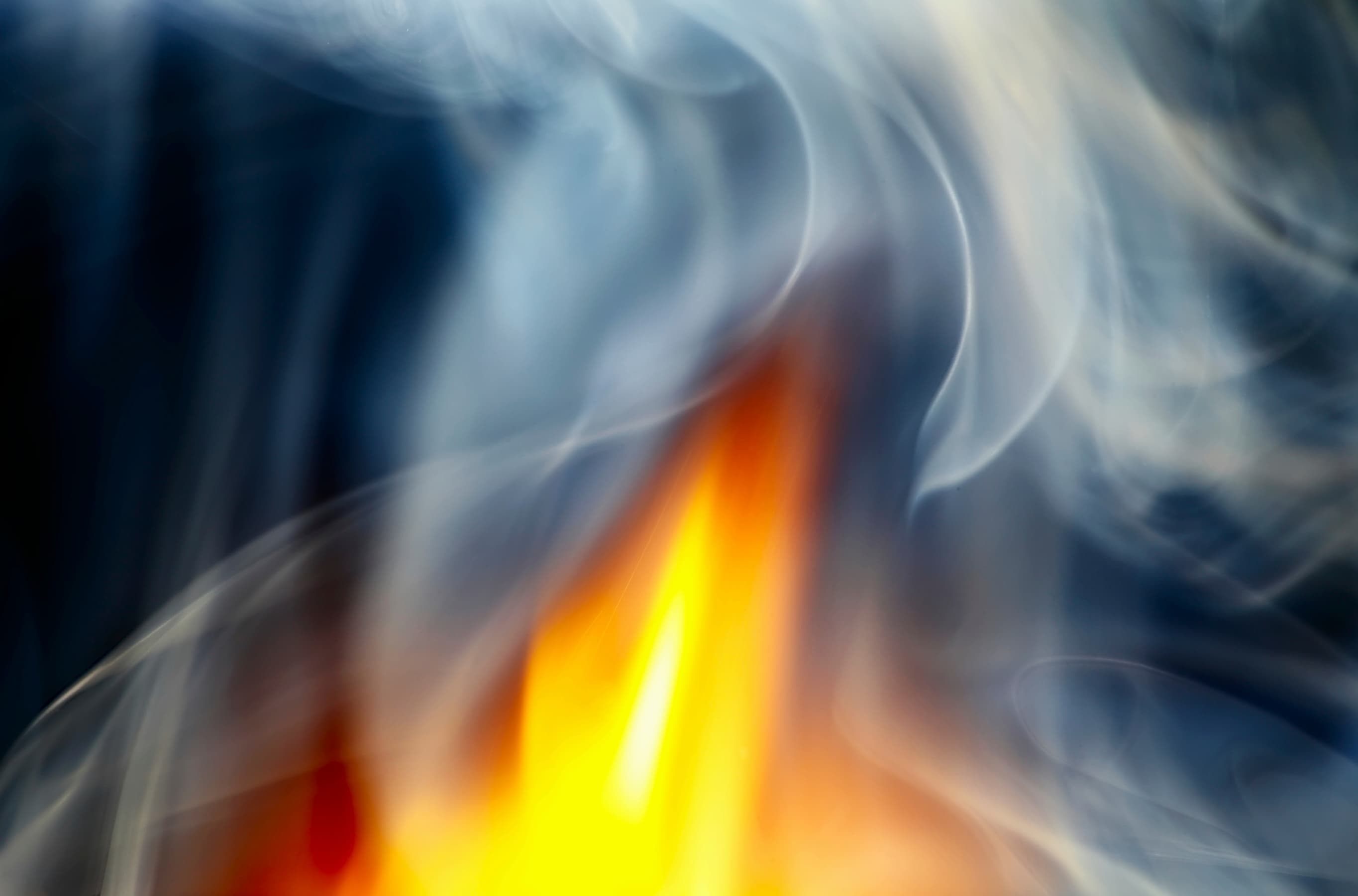
What is the fire triangle?
Otherwise known as the combustion triangle, the fire triangle model represents three sides of a triangle, each showing a vital element needed to create and sustain a fire.
The sides are oxygen, heat and fuel – if just one of these elements is removed, the fire will cease to exist.
This basic scientific principle is valuable knowledge for not just firefighters, but for everyone.
What is the fire tetrahedron?
Simply put, the fire tetrahedron is a more up-to-date version of the fire triangle and emerged after calls for the inclusion of a fourth element into the triangle – the chemical chain reaction – which also needs to be present for a fire to occur. This transformed the fire triangle into a fire tetrahedron.
So, how can removing one of these four elements extinguish a fire?
How can we extinguish a fire using the fire tetrahedron?
Now, we’ll take a closer look at each element of the tetrahedron to establish how to eliminate each one, and what effect that has.
- Oxygen: For a fire to ignite and sustain itself, it requires a steady oxygen supply, as this is a key component of the chemical reaction in combustion. Air consists of around 21% oxygen, which is enough for a fire to burn. That’s why throwing a fire blanket over the flames is a way of smothering the fire to prevent any oxygen from reaching the flames. Sand and dirt can also be used to smother a fire. Another common technique is using a carbon dioxide fire extinguisher, which works by displacing oxygen – though this should only be used on Class B and electrical fires. Removing the oxygen element is usually only a viable option for small fires, however, as there is no way of effectively smothering a large-scale fire.
- Heat: Heat works to trigger or exacerbate a fire by removing the moisture from the fuel source and raising the temperature enough for ignition to occur. There are several ways to eliminate or reduce the heat source. This can be done by applying a cooling agent such as water, powder, gas or a chemical retardant, found in various fire extinguishers – ensure you choose a technique appropriate to the type of fire, or you could worsen the blaze. Switching off electricity in a burning building can also curtail heat, too.
- Fuel source: Fuel refers to anything that is combustible, whether that be oil, paper, cardboard, wood, gas, plastics, cloth etc. Fires stop naturally when the fuel or flammable material has burned through, however, waiting for a fire to naturally die down is not usually a safe or viable option. How well the fuel will burn depends on other external factors, such as its chemical makeup, the surrounding oxygen, and how damp a fuel source is. Preventing a fire in the first place can involve ensuring flammable materials at your premises are identified and kept somewhere safe, or moving flammable items out of the path of an ongoing fire.
- Chemical chain reaction: Another technique to quell a fire is to disturb or break the chemical reaction chain. When a fire burns, free radicals or electrons are produced from the fuel which then pair up with the oxygen molecules, and this reaction raises the temperature even more – thus, keeping a fire going. Halon and BCF can work to clear away these free radicals, thus slowing down the chemical reaction and therefore the fire.
Remember: It’s worth noting that certain extinguishers can only be used on certain types of fuels – using the wrong fire retardant on some types of fire can actually exacerbate the flames or create an explosion. Therefore, you should always check with a fire safety professional first before purchasing a fire extinguisher that’s right for your premises.
Searching for industry-quality fire safety equipment in Ipswich, Colchester or surrounding areas? Here at Protect & Detect, we supply, install and maintain a diverse range of equipment to help you protect your premises, including fire alarm systems, sprinkler systems and a variety of fire extinguishers. To find out more about how we can keep your home or business safe, simply contact our advisers today.
Protect & Detect is a leading fire safety and security company, servicing Ipswich, Colchester, Cambridge, Bury St. Edmunds, Chelmsford and beyond.
Protect & Detect offers a wide range of fire safety and security services including; fire alarms, fire extinguishers, burglar alarms, intruder alarms, fire sprinkler systems, access control, door entry systems, CCTV, barriers, nurse and warden calls. Contact our friendly team today for a quick quote.

